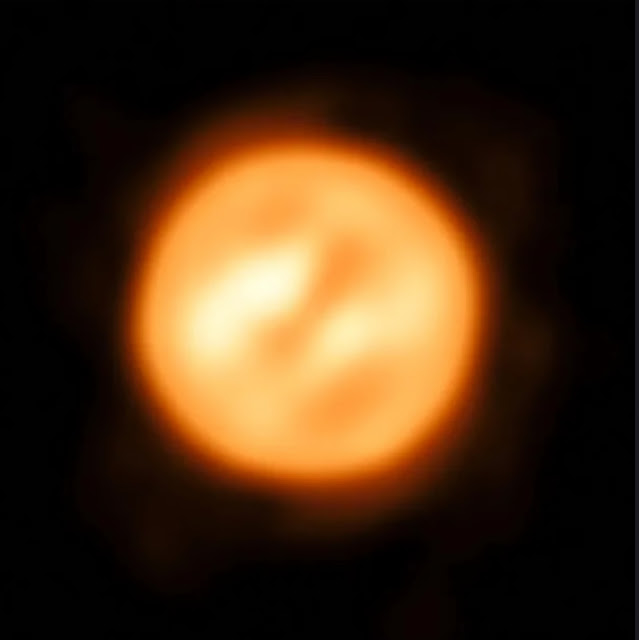Top 10 Supergiant Stars: A Journey Through the Universe's Largest Stars
Have you ever wondered about the biggest, brightest stars out there in the cosmos? Supergiant stars are some of the most fascinating objects in the universe. Their immense size and brightness make them both awe-inspiring and mysterious. Today, let’s take a journey through the top 10 supergiant stars, exploring their mind-blowing sizes and what makes them so unique.
1. Stephenson 2-18: The Colossus of the Cosmos
Let's start with a real heavyweight—Stephenson 2-18, also known as the largest known star in the universe. This red hypergiant is so vast that around 10 billion Suns could fit inside it! Located about 20,000 light-years away in the Scutum-Centaurus Arm of the Milky Way, it has a radius of around 2,150 solar radii. If you could somehow stand on the surface of this behemoth, it would be hard to even imagine the scale. It's a mind-boggling thought that such a star exists in our own galaxy!
2. UY Scuti: A Familiar Giant
You've probably heard of UY Scuti. It's often cited as the biggest star in terms of radius. This red supergiant, located 9,500 light-years away, has a radius of 1,708 times the size of our Sun. Despite being the largest in size, it’s not the heaviest. But its vast size and brilliance make it one of the most studied stars in the universe. Imagine if it replaced our Sun—it would stretch beyond Jupiter’s orbit!
3. WOH G64: A Star Across Galaxies
This one takes us out of our galaxy! WOH G64 is a red hypergiant located in the Large Magellanic Cloud, which is 163,000 light-years away. With a size of up to 1,730 solar radii, this star is truly a giant. Scientists have even speculated that it could grow even bigger—3,000 solar radii, based on older calculations. Just think about the scale of that! It’s truly one of the largest stars observed in a satellite galaxy to our own.
4. RW Cephei: A Yellow Hypergiant
While we tend to focus on red supergiants, RW Cephei is a yellow hypergiant star in the constellation Cepheus. It's 1,535 times the radius of our Sun and located about 14,000 light-years away. RW Cephei is famous for being one of the brightest stars in its constellation. Unlike its red counterparts, yellow hypergiants are rare and tend to have shorter lifespans.
5. VY Canis Majoris: The Once-Top Contender
For a long time, VY Canis Majoris was considered the largest star. This red supergiant sits about 4,900 light-years away in the constellation Canis Major. Its radius is about 1,540 solar radii, and if placed in our solar system, it would stretch out to the orbit of Saturn! It's easy to see why it captured the imagination of astronomers and stargazers alike.
6. Mu Cephei: The Garnet Star
Named for its rich red color, Mu Cephei, also called the Garnet Star, is a massive red supergiant in the constellation Cepheus. At 1,420 times the Sun's radius, Mu Cephei is nearing the end of its life cycle. Though it’s not as large as some of the other giants we’ve discussed, it remains a key object of study due to its incredible luminosity and stellar size.
7. Betelgeuse: Our Closest Supergiant
If you've ever stargazed, you’ve probably seen Betelgeuse, one of the most famous stars in the night sky. A red supergiant located about 640 light-years away in the constellation Orion, Betelgeuse is 1,200 times the size of the Sun. This star is nearing the end of its life, and astronomers are eagerly awaiting its eventual explosion as a supernova. Who knows, it could happen in our lifetime!
8. Antares: The Heart of the Scorpion
Located in the constellation Scorpius, Antares is another famous red supergiant. At about 680 times the size of the Sun, it’s one of the brighter stars in the sky and often called the “heart of the scorpion.” This star is in the later stages of its life cycle, just like Betelgeuse, and it's expected to eventually explode as a supernova.
9. NML Cygni: A Star on the Edge
NML Cygni, located in the constellation Cygnus, is a red hypergiant star with a radius of about 1,640 solar radii. At around 5,300 light-years away, NML Cygni is surrounded by a dense shell of material ejected during its unstable stages. Its extreme mass loss makes it one of the most intriguing stars to study.
10. KW Sagittarii: A Dazzling Red Supergiant
Rounding out our list is KW Sagittarii, another red supergiant with a 1,460 solar radius. Though it's not the largest star in terms of size, KW Sagittarii's stunning brightness and beauty in the night sky have captured the attention of astronomers for years.
Why Should We Care About These Giant Stars?
These supergiant stars are more than just massive celestial objects. They play an important role in the life cycle of stars, particularly in the final stages. Many of them will eventually end in supernovae, enriching the interstellar medium with heavier elements that help form new stars, planets, and even life.
It's fascinating to think that despite their immense size, these stars are still just a tiny part of the universe. Their study helps astronomers understand more about stellar evolution and the forces that shape galaxies.
Which of these supergiant stars amazed you the most? Drop a comment below, and let’s discuss!











Comments
Post a Comment